I have to admit that a Hi-Point firearm is not one that I would consider in a pistol. Much has been said, videoed, and reviewed about Hi-Point pistols and many of the negatives have been due to the weight and bulkiness of the pistols. The Hi-Point carbines, on the other hand, have received praise from many shooters of the carbine community.
I have a Beretta CX4 Storm carbine that is chambered in 9mm and a .45 ACP version of this little guy would be nice to have. First of all, they are hard to find. Secondly, there are expensive. There are not many .45 carbines in the carbine market these days. Granted, there is the Auto-Ordinance 1927-A1 Thompson, but the price of one of these exceeds my cost per benefit analysis. Have you tried to find an UZI semi-automatic .45 ACP carbine for a decent price? There is also the Kel-Tek Sub2000 carbine, but it is only manufactured (at this time) in 9mm and .40 S&W. There is the Thureon Defence “GA” Basic Carbine starting at $960. I might be able to find an old Marlin .45 Carbine. I have had one of these in the past, and while they are a nice carbine, they are no longer supported, and the fire control system is internally more complex than the average person can handle if they decided to strip the carbine to its core. Additionally, there is the JR (Just Right) Carbine .45 ACP Edition that goes from $550 to $700 on the open market. There is also the KRISS Vector in .45 ACP, and again the cost of this firearm is beyond my normal means – way beyond my normal means. And, finally, there is the Taurus CT carbine, which is made in 9mm and .40 S&W and that could be actually less-appealing than the Beretta CX4 Storm – although it is cheaper than the PX4 Storm (IMHO). I simply wanted a PCC in .45 ACP that was dependable and inexpensive. Is that too much to ask?
I have been researching the Hi-Point 4595TS (TS stands for Tactical Stock) series of carbines that is the second generation of Hi-Point carbines. When I read that Hi-Point doesn’t even recommend tear-down and cleaning until at 1,500 to 2,000 rounds, my interest was peaked because I like to keep my firearms well-maintained and clean and I am interested in why somebody, especially a firearm’s manufacturer, would tell me not to do that. I also found, during my research, that Hi-Point 995 carbines were labeled as “Assault Rifles” in Connecticut in 2013.
It was also noted, during my research, that the Hi-Point 995 carbine was targeting the civilian market, but it has been approved and purchased by a small number of local police departments that cannot easily afford to outfit all of their officers with more expensive long guns. Considering the price of the Hi-Point 4595TS series of carbines, and as a result of my research on them, I felt confident enough to take a chance. If nothing else, this would be a reasonable cost per benefit experiment. I placed an order for the basic version; the Hi-Point 4595TS with basic black polymer furniture and an additional three spare magazines. A week later I received the call from my LGS that the Hi-Point had arrived. A short trip was made and the firearm was inspected and blessed as acceptable. Shortly thereafter; money was paid, a 4473 was completed, and the Hi-Point 4595TS was legally in my possession.
THE BASICS:
SOME ASSEMBLY REQUIRED:
If you purchased any Hi-Point 4595TS carbine, you will also receive some basic items with your purchase:
- 1 ea. Multi-tool that is specific to the firearm
- 1 ea. Operating Rod assembly (Operating Rod and Roller(25, 26))
- 2 ea. 1” Sling Swivels
- 2 ea. Metal Sling Adjuster
- 1 ea. Nylon Sling
- 1 ea. 9-round Magazine
- 1 ea. Instruction Sheet w/parts breakdown
- 1 ea. Accessory List
- 1 ea. Magazine Warning Sheet
- 1 ea. Hi-Point Dual Lok w/instructions (Note: The multi-tool provides the means to operate the lock and a separate padlock is required to secure the lock.)
- 1 ea. Chamber Flag
The Operating Handle assembly must be installed and the multi-tool provides the means to install it.
If you purchased the Hi-Point 4595TS with any or all of the options, the optional accessories will also be included with your purchase.
All options will require mounting and all optics will require zeroing.
OVERALL APPEAL (IF ANY):
 In general, and in my opinion, the Hi-Point 4595TS PCC has a slightly AK take to it with one big advantage of a longer sight radius and much better sights. It is a piece that definitely leans to the tactical side and that should appeal too many. There are several variations of the Hi-Point 4595TS that include laser, scope, red dot, light, and folding front vertical hand grip, and any combination thereof. I decided to go bare-bones basic in my choice.
In general, and in my opinion, the Hi-Point 4595TS PCC has a slightly AK take to it with one big advantage of a longer sight radius and much better sights. It is a piece that definitely leans to the tactical side and that should appeal too many. There are several variations of the Hi-Point 4595TS that include laser, scope, red dot, light, and folding front vertical hand grip, and any combination thereof. I decided to go bare-bones basic in my choice.
The Hi-Point 4595TS is somewhat futuristic looking with enough rail surfaces to satisfy those ardent fans of attachments. Nomics, as in “ergo,” is primarily left up to the operator to determine how well all of the controls operate in their hands and how comfortable the Hi-Point 4595TS is to shoot. Being a left-hand long gun shooter, I had concerns such as Operating Handle location, ejection, and safety location and operation, but I soon found that I needed not be concerned after handling the Hi-Point 4595TS and becoming familiar with it.
The fact that the Hi-Point 995 carbine was deemed an “Assault Rifle” in the State of Connecticut may also deepen the appeal for the firearm.
OVERALL QUALITY and CONSTRUCTION:
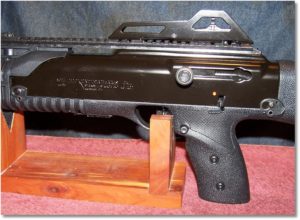 Hi-Point touts the fact that their firearms are the least returned and/or repaired in the industry. That is a pretty bold statement to state considering that most would agree that Hi-Point firearms are priced for the frugally-minded consumer. But, does the price reflect the quality of the firearm?
Hi-Point touts the fact that their firearms are the least returned and/or repaired in the industry. That is a pretty bold statement to state considering that most would agree that Hi-Point firearms are priced for the frugally-minded consumer. But, does the price reflect the quality of the firearm?
The Hi-Point 4595TS is a 100% American-made product in Ohio and, as Americans, we expect a higher quality firearm (even with an inexpensive one) than what could be obtained from a foreign country for the hard-earned cash that we plunk down on the counter. Does the Hi-Point 4595TS digress from “American” standards of expectations? Well, I suspect that it depends upon what standards that you expect. If cost is your only factor in determining quality, the Hi-Point 4595TS may change your reasoning.
I am not a metallurgist, an engineer, or an expert in the design of firearms. In fact, I am probably pretty stupid about firearms in general, but that does not mean that I cannot forge an opinion based on what is in front of me and then pass that opinion onto others who might be interested in the same product. With that said, I will attempt to reach the gun-geek in some by voicing my opinion of the overall quality and construction of the Hi-Point 4595TS.
Attempting to mate stock to steel has always been a challenge to firearm manufacturers regardless of the type of stock and quality of finished steel used. Firearms, in general, have always been modular affairs (lock, stock, and barrel) and that characteristic has been passed to the present and will continue into the future. Longevity of a firearm is established through the quality and construction of a firearm and modern manufacturing and materials has stretched the lifespan of many firearms – even inexpensive ones. With that said, failures can occur even in very expensive firearms and the MTBF (Mean Time Between Failure) is usually determined by the weakest component (excluding the operator). In a lot of cases, and with firearms that use external magazines as a food source, failure of these firearms are largely with the magazines being used. The ammunition (another external source) being used in a firearm can also be a contributing factor in determining a firearm’s quality, but unfairly so. Using ammunition, which stretches the limits of common sense and the firearm’s upper limit, does not demonstrate the quality and construction of a firearm. Many; however, feel that it does. However, the people that do so are the same that would run an engine to 9,000 rpm despite the engine’s limits being 8,000 rpm just because they can. The Hi-Point 4595TS is +P rated and that should speak to its quality somewhat.
I have read where the receiver and bolt is die-cast from Zamak-3 (https://en.wikipedia.org/wiki/Zamak#Zamak_3)
Considering the cost to the consumer for the Hi-Point 4595TS, there is a lot of quality for the money. I have purchased firearms for a lot more money than the Hi-Point 4595TS that I have found to be ill-fitted and poorly-matched finishes. I have had, on some occasions, to procure the labor of a qualified gunsmith to make things right with a new firearm and endured the agony of seeing that first scratch on a finish that was supposed to be as durable as any known to man.
AUTHORS NOTE: Where possible, I have included a part identifier (number) in parenthesis following a part’s name. An Illustrated Parts Breakdown (IPB) is located at the end of the article, which you can use to locate a part that is being discussed.
Alright, so the Receiver Shroud (4) is stamped metal! You expect forged? C’mon, is not the receiver cover on an AK stamped? The Receiver Shroud is held securely in place by two, spring-loaded captive pins; I have not yet seen that on an AK or budget MSR! The Receiver Shroud is actually a nicely-sculptured, 0.065-inch thick stamped piece of work that also serves as a foundation for the polymer sight rail, and subsequently, the fully-adjustable rear sight. Finished with what seems to be an evenly-applied baked-on finish, the Receiver Shroud lends itself to personal customization in a variety of finishes such as Duracoat, Krylon, or even Cerakote.
All internal components seem to be machined well and I was actually surprised at the lack of tooling marks. That is not to say that they don’t exist, but there were fewer than I expected.
Quality is not just in the firearm but also in the manufacturer’s willingness to support their product. All Hi-Point firearms include a lifetime “no questions asked” warranty that transfers to anyone who purchases a used Hi-Point firearm.
While I cannot testify to the longevity of the Hi-Point 4595TS, it would seem that if the firearm was properly cared for and operated within its limits, it is should be around for quite a while.
ACTION:
The action is a straight blow-back, closed-bolt firing design and uses a heavy bolt (18), recoil spring (28), and double-spring (20, 20A) firing pin (19) system. The Operating Handle (25, 26) is located on the left side while ejection is out of the right side of the receiver. The Hi-Point 4595TS features a lock-back-on-last-round feature (with Hi-Point magazines). After the last round in the magazine is fired, part of the magazine presses upward against a Hold Open lever (40), which is under tension by a Hold Open Spring (41). The bolt is locked back by the Hold Open lever (40). When the Operating Handle (25, 26) is pulled rearward with or without a loaded magazine, taking tension off of the Lock Back lever (40), the Lock Back Spring (41) pulls the Lock Back lever out of the way of the bolt, which allows the bolt to move forward into battery due to the tension of the Recoil Spring.
The action can be locked back manually by pulling the Operating Handle fully rearward and then pushing Operating Handle Roller inward to lock it into its detent in the Receiver Shroud. With that said, some effort is required because the bolt is stiff at the end of its rearward travel. Also, with that said, I found it easier to insert an empty magazine and then pull the Operating Handle full rearward until it locks in place with the Hold Open lever; this is much easier than trying to locate the locking notch without a magazine inserted (there is absolutely no charge for this useful information).It should be noted that the Breech Bolt (18) moves very smoothly and straight to the rear upon recoil and is not a rotating bolt as found in some semi-automatic carbines (and some pistols). I also noticed, after inspecting the Breech Bolt after disassembly, that the face of all (apparent) friction surfaces is highly polished.
The Operating Handle (25) and Roller (26) are attached to the bolt via the wrench that is provided with the firearm. The threaded Operating Handle is pushed through the bolt upon assembly where it is secured on the opposite side by screw threads. Removing the Operating Handle is necessary when disassembling the Hi-Point 4595TS. The tightness of the charging handle might need checking periodically during firing. Hi-Point states in its documentation, “DO NOT OVERTIGHTEN ANY SCREWS OR NUTS. SNUG IS SUFFICIENT.”
If you are a right-handed shooter, the Operating Handle will be coming back at your face at a pretty good clip when firing while ejecting shells away to your right. If you are a left-handed long gun shooter, as I am, what the charging handle does is no concern because it is on the left side of the body. Spent shell ejection; however, is to the right as it would be on most long guns set up for right handed operation. As a left-handed operator, the angle of shell ejection and hot gases could be a concern; it is not pleasant to be hit in the face with hot brass or hot gas residue. Obviously, eye protection should always be worn when operating any firearm.Spent shell extraction is via a robust external (to the bolt) extractor.
The firing pin (19) is a free-floating affair that rides within a channel. Dual firing pin coil springs (20, 20A) also float within the firing pin channel. The dual spring-loaded firing pin means that the firing pin will reliably protrude past the bolt face and buffer the firing pin from the impact with the spent primer during recoil, but only for a mere fraction of a second a the end of the recoil. When the bolt is fully rearward (locked), the firing pin protrudes approximately 1/8” out from the bolt face. The Hi-Point 4595TS uses the firing pin to eject spent cartridges. While this seems to be a strange way of ejecting spent shells, it seems to be effective. When the bolt begins its forward motion, spring tension is removed from the firing pin and the firing pin floats within the firing pin channel, which prevents the possibility of a “slam fire” occurring. As soon as the hammer is clear of the firing pin during recoil, the firing pin again floats for a brief moment until coming under tension by the firing pin springs.With that said, there have been very few reports about bent firing pins. I suspect; however, that bent firing pins could possibly attributed with high round counts, weak recoil springs, weak firing pin springs, too strong of an extractor, and/or high-pressure ammunition. Of course, this is all speculation on my part and only use and time with my particular Hi-Point 4595TS will tell any story. With this said, I had placed a call to Hi-Point to ask a question about bent firing pins. Surprisingly, I was able to talk to one of the technicians about the firing pin issue and he stated that he has seen a few bent firing pins and clued me into the cause. Bent firing pins are caused by the operator. That seemed to me, at first, to be a point of placing the blame on the operator and not on Hi-Point. However, he went on to explain the cause of the problem. Hi-Point recommends that the Operating Handle be pulled fully to the rear and locked into place prior to inserting a loaded magazine. The bent firing pin is due to the operator not fully pulling the Operating Handle to the rear before releasing the handle to chamber a round. In shooter’s terms we have come to know this as “Short Stroking” as related to pump-action shotguns.
Because the firing pin protrudes from the bolt face, short-stroking from a closed bolt position with a loaded magazine could cause undue lateral stress on the firing pin when attempting to pick up the round from the magazine; the cartridge case hits the firing pin as the cartridge is forced into the extractor. If the bolt is locked fully to the rear when inserting a magazine, the cartridge hitting the side of the firing pin is mitigated. During normal fire, of course, the bolt is slammed fully to the rear by the force of the recoil, the spent shell casing is ejected by the firing pin, and due to the forward motion of the bolt the floating firing pin should retract back into the bolt face as a new round is picked up from the magazine. I; however, see another possibility that could cause a bent firing pin – weak loads.
The beauty of the 1911 pistol is that we can quickly swap out recoil springs to accommodate loads from light to heavy to ensure proper cycling of the slide. The Hi-Point carbine does not have that capability. Until I can determine otherwise, what recoil spring comes with the Hi-Point 4595TS is the recoil spring that you are stuck with. In short, that means that the rifle could be ammunition sensitive. The Hi-Point carbine is designed to fire commercial loads up to and including +P ammunition. The standard 230-grain US Army ball ammunition was designed at 830 fps, but that was for use with the 1911 pistol and which could also be used in the Thompson sub-machine gun (https://en.wikipedia.org/wiki/Thompson_submachine_gun) and the M3 Sub-machine gun (https://en.wikipedia.org/wiki/M3_submachine_gun). By comparison, modern Federal American Eagle 230-grain FMJ is rated at 890 fps. My point here is that you will need, as with any semi-automatic firearm, ammunition that cycles the firearm properly (among other things). While lightly-loaded hand-loads or light-recoil range ammunition may work just swell in your .45 ACP pistols, it may not work well in a PCC with a heavy recoil spring and bolt.
Expended shells are ejected from the chamber well to the right side. The only time that I have been hit by a spent cartridge is when they bounce off the lane wall at the range.
Extraction is positive and I have not experienced any problems in that area.
The Recoil Spring seems to be very stout and, if I ventured a guess, I would say that it is in the 18-pound rate zone.
UPPER AND FOREND:
The upper section and forend is very busy. The Receiver Shroud is held into place by captivated pins and clips while the Forend Cover is held into place by a Rail Lock and friction fitting. The lower forearm is highly-textured and has a lower Weaver rail for attachments. Personally, I do not find the forearm uncomfortable to hold with my bare hands. The upper polymer Forend Cover does blend well with the Receiver Shroud and is a skeletonized affair. The Forend Cover does have four slots that allow heat from the barrel to escape. The Forend Cover mates up with four slots that are part of the lower forearm of the stock. To remove the Forend Cover, simply flip the Rail Lock up and back. Then, pull the Forend Cover forward until it clears the slots. To install the Forend Cover, simply slide the Forend Cover into the four retaining slots and press the Rail Lock forward and down until it is seated. Note that the Rail Lock locks the top rail to the Forend Cover and keeps the Top Rail from flexing while holding the Forend Cover in place.The Receiver Shroud incorporates a full-length polymer Weaver sight rail that extends forward and over the Forend Cover. With the rear sight installed, there is approximately 4.5” of polymer rail on which to mount an optic such as a red dot sight. Using a magnified scope requires that the rear sight be removed.
BARREL:
With the Hi-Point 4595TS, the 17.5” barrel is integrated into the Receiver and fire control system and is held into place with the Breech Bolt (4) that also contains the Firing Pin (19), Firing Pin Springs (20, 20A), and Bolt Retainer (21) that is held in place by the Bolt Retainer Clip (27). The barrel has a RH 1:16 twist rate that is common to the .45 caliber. Because of the longer barrel length over a standard pistol, some higher velocity and accuracy can be expected.The barrel crown is a slight rounding at the muzzle and could be an area susceptible to damage. Hi-Point has a muzzle brake attachment that I may order to help protect this most important end of this firearm.
It was apparent that my particular Hi-Point 4595TS was fired before shipment, as evident by the fouling in the barrel. A few pulls with a Bore-Snake cleaned the bore up quite well.
Hi-Point recommends cleaning the barrel every 300-400 rounds.
As soon as one comes available, I will be ordering a Carbine Compensator from Hi-Point to better protect the muzzle.
STOCK AND GRIP:
The stock appears to be actually two separate pieces that are held together by bolts and nuts located at strategic points (see, IPB at end of article).
The butt area of the stock is skeletonized and incorporates a polymer butt-pad that bolts onto a buffered bolt-on butt-plate. Three springs provide buffering, although there is not much recoil at all with the Hi-Point 4595TS. However, the springs may also add a bit of safety if the firearm is dropped on the butt pad – absorbing shock and helping to prevent the firing pin from striking the primer of a live round. A polymer insert in the top of the butt stock provides a solid cheek rest. The LOP (Length of Pull) of the stock is approximately 14.5” and for me is almost perfect. The stock is has a finely-pebbled texture, with the exception of the cheek-piece and the grip area, which have a texture of their own, and all blend well to make a nice overall appearance of the stock. Each side of the grip, at the top, is sculptured to accept the trigger finger and thumb and the grip is very comfortable. I was at first, being a left-handed shooter, concerned that the trigger finger might make contact the magazine release, but this does not seem to be an issue when the Hi-Point 4595TS is properly mounted into the shoulder.With a grip that accepts a single-stack magazine, the width surprised me and is not one that you could call svelte in any term at 1.46” where the majority of the hand rests. The grip is mildly-textured and provides a good surface for the hand. A single finger groove (I like finger grooves) provides for quickly locating the hand to the grip.
The grip angle and contour is comfortable in my hand and has just enough arch in it for the palm of my hand to feel at home.
The front and the rear of the grip have horizontal serrations and the shooting finger and thumb area is a panel of texture different from the other textures. With the use of polymer, texturing can be as aggressive or as casual as the manufacturer deems and what is but a casual texture would take a very long time to reproduce in a stock of wood.
The front end of the stock extends well into the barrel where you will find an “under-barrel” rail that is part of the lower hand-guard for mounting light or laser. The bottom, polymer rail can be removed with a 9/64” Allen Head wrench. However, there are polymer guide pins for the rail that are integral to the forearm; therefore, removing the rail may not be a viable option unless you are willing to do some cleanup work.
The stock also has provisions for mounting the PP45 Kit (an option from Hi-Point) that attaches at the rear of the stock and is meant to hold a spare magazine on each side of the stock.
Two 1” sling attachments are provided with the Hi-Point 4595TS, as is a sling. A Plunger Screw at the rear of the stock, and the front stock bolt has to be removed and replaced with the sling swivel bolts to accommodate a sling. I have not yet decided to “sling” the Hi-Point 4595TS, but if I do it will not be with the provided sling (my mamma always told me that if I didn’t have something nice to say it is best not to say anything at all), although the sling attachments would be suitable for general applications.
SIGHTS:
The front sight is a two-piece, steel unit consisting of a Front Sight Base and the Front Sight that is affixed to the barrel and is in stark contrast to the barrel’s finish – to cut glare, perhaps? Two set screws attach the Front Sight Base to the barrel and the Front Sight is held in place to the Front Sight Base by a hex-head bolt. The Front Sight can be removed to accommodate optic-only capabilities while keeping the Front Sight Base in place on the barrel. The sight post is well protected by a shroud, and sits above the barrels bore axis by about 2.25-inches.
The front sight can be coarsely adjusted for elevation by loosing the Front Sight Screw slightly to allow the Front Sight to move up or down within its channel.
The rear sight is an inexpensive-looking but is a fully-adjustable “ghost” sight for windage and elevation. Adjustment increments are clearly highlighted with hi-visibility paint – almost too much so, but they are not distracting. The rear sight has indicators that help you align the sight for both windage and elevation. The rear sight is fully protected by side rails from damage. The rear sight, as with the front sight, is removable to accommodate optic-only sighting or for mounting a magnified optic that will “clear” the front sight. The rear sight sits high, and due to the angle of the stock, a cheek weld is not hard to obtain when using the rear sight. In fact, I find it more difficult to pick up the rear sight on an AK than with the Hi-Point 4595TS.The rear Sight Holder Assembly is made of formed steel and seems to be coated with the same material as the Receiver Shroud. While the edges of the Sight Holder are not well-finished, I have nothing negative to say about its purpose – providing a place to mount the rear sight while adding protection.
The “ghost” of the rear sight appears to be the same size as the hood on the front sight when sighted from the rear. Simply match the hood of the front sight to the “ghost” outline of the rear sight to place the tip of the front sight post in the center of the two “rings.”
Note that the rear site and optic rail is polymer and not metal. The same can be stated about all rails. Some care should be taken to not over-tighten accessories.
Other Hi-Point 4595TS models come with a laser, light, magnified optic, or red dot sight and “light and sight” combinations – all of which do not add an excessive price to the firearm.
The Hi-Point 4595TS is pretty flexible to many optics in my book.
Allow me to digress but for a moment.
I had a Leapers UTG 4in ITA Red/Green Circle Dot Sight w/ Integral QD Picatinny Mount SCP-RG40CDQ on hand; one which I had removed from a shotgun and replaced with a laser. The sight pattern is a segmented outer circle with a center dot. I mounted the optic without a riser and found that I could view the iron sights through the optic through the lower one-third of the optic perfectly with both eyes open, and could almost perfectly co-witness the optic with the iron sights. The outer, segmented circle of the optic is just inside the “ghost” of the rear sight and is also just inside the front sight shroud. Once I verified zero of the iron sights, I adjusted the center dot to the very tip of the front sight. When using the rear sight with the optic, I simply turn the optic on and line up the outlines of the “ghost” of the rear sight and the shroud of the front sight with the center dot as close to the tip of the front sight as possible with both eyes open. It works out quite well, actually. The only disadvantage to this setup is that I must remove the optic to accommodate removal of the Forend Cover and I can loose zero with the optic – but not by much. And, since I am left-eye dominant, closing my right eye to shoot left-handed does not shift the sight in my field of vision.It is also possible, with the Leapers UTG 4in ITA Red/Green Circle Dot Sight w/ Integral QD Picatinny Mount SCP-RG40CDQ, to remove the Front Sight (15), use the dot of the sight as a substitute for the front sight, and have complete “fine tuning” flexibility to adjust both elevation and windage using the optic.
SAFETIES:
A thumb safety lever is located on the left side of the firearm just above the hand grip and should be well within reach of most shooters. The thumb safety operates in a conventional manner where down=fire (the red dot on the receiver cover is visible) and up=safe (the red dot on the receiver cover is not visible.Since I am a left-handed long gun operator, my trigger finger is also my “multiple tasks” finger when it comes to right-handed long-gun setups. With the Hi-Point 4595TS, my trigger finger gets to operate the trigger, safety, and magazine release button.
The thumb safety lever itself is a slim, but lightly-textured affair. I have become accustomed to operating the thumb safety on the MSR, but that thumb safety lever is more substantial than the thumb safety with the Hi-Point 4595TS. The thumb safety lever could use a lip of some sort to better accommodate moving from one position to the other – in both directions. The thumb safety with the Hi-Point 4595TS; while stiff when new, is easily moved from one position to the other and the trigger finger has ample strength to move it.
Note that the thumb safety is part of the barrel/receiver/fire control group and the safety lever simply protrudes through the Receiver Shroud and a small portion at the top of the stock. When the lever is within the Receiver Shroud, the Hi-Point 4595TS cannot be fired.
One feature that I did find nice is that safety warnings consists of two, peel-off stickers that are on the cheek piece rather than etched into the firearm itself. I find this method much more agreeable than etching safety information on parts of a firearm that may be pointed in unsafe directions while the operator reads the notices.Hey, manufacturers! Most people don’t read the manual provided with the firearm – and you really expect people to read a barrel?
Excuse me while I digress into a history lesson.
The two gunfighters squared off in the middle of the Western cow-town at high-noon. Staring each other down for a few minutes, the first gunfighter draws his revolver in a quick and deft motion. Unfortunately, the other gunfighter is more deft and deliberate.
The better of the two walks to the other gunfighter who is now is bleeding on the ground.
“Any last words, before you die?” asks the victor.
The other gunfighter, as he lies dying, looks up at him and says, “You didn’t read the owner’s manual for instructions before shooting!”
Somehow, that last exchange was lost in Western history books, but I thought that the last words of a dying man were important enough to bring them to light in an effort to correct history. Bill Ruger would have wanted it that way.
MAGAZINES and MAGAZINE RELEASE – PLEASE RELEASE ME, LET ME GO:
“Use of Pro-Mag high capacity magazines damages the loading ramp of the model 995 and 995TS and VOIDS the warranty.”
The magazine FOR the Hi-Point 4595TS is a steel magazine with a polymer follower. A polymer base-plate extends beyond the magazine well to accommodate insertion and removal of the magazine – and you will need it.
When a magazine is inserted into the magazine well, all goes well for a bit. Then, it seems that you hit a wall of resistance. At this point, you had better be ready to forcibly “slap” the magazine until it seats with an audible click. The magazine, once seated is slightly loose but that is nothing to be concerned about.
The Magazine Catch Cap (as Hi-Point call the magazine release button) is located just rearward of the trigger guard on the left side of the firearm on the grip. I can push the Magazine Catch Cap in just fine with my trigger finger or middle finger, which also helps to keep my trigger finger out of the trigger guard and gives it something to do when not pulling the trigger.
Once the Magazine Catch Cap (the magazine release button) is pressed, the magazine will drop free, but only for a short distance. You must then grab the magazine to pull it fully from the magazine well. This may change with use and polymer gives way to metal.
Inside the magazine well is a Counter Weight (34) that is held in place by two polymer rails. In early model of the 995TS carbine, the counterweight was notched. If the magazine was inserted in a fashion other than straight, the edge of the counter-weight would prevent the magazine from being inserted. The counter-weight edge is no longer present in the newer version of the 995TS and the edge is now a gradual slope that does not interfere with inserting the magazine.
It appears that on my particular Hi-Point 4595TS, that the protrusion on the magazine that is used to lock the magazine into place, was rubbing on one of the polymer ribs within the grip. The magazine is steel – the rib is polymer – I foresee the issue rectifying itself as time and magazine use goes on – metal beats polymer every time.
Inside the magazine well are also two Handle Supports (45) with the apparent purpose is to add strength to the grip while providing a path for the magazine to travel. Each Handle Support (45) is secured by a Handle Support Screws (47), which you see two of on each side of the grip. The ends of these screws protrude slightly past each Handle Support (45). With that said, the polymer magazine guides on the inside of the magazine well seem to work fine and are well above the tips of the Handle Support Screw(s).
Because of the protrusion on the magazine just before the Magazine Catch opening, and when inserting a magazine, I have found it to be useful to press the Magazine Catch Cap fully to accommodate smoother magazine insertions and removals.
The extended, polymer magazine base adds about 0.75” to the grip. The extended magazine base plate does not appear to be removable. Thus, it appears that the magazines cannot be disassembled for cleaning.
Hi-Point offers a kit that allows the attachment of two magazines to the stock.
TRIGGER:
The Trigger Assembly (30) is polymer and skeletonized and is not the best trigger that I have ever pulled in my life.
The face of the trigger is wide and serrated.
The trigger pull, and I have something to compare to, is somewhere in between the standard AR mil-spec trigger and the trigger on an SKS or Mosin-Nagant rifle while leaning more to the SKS or Mosin-Nagant rifle. The trigger of the Hi-Point 4595TS is workable, but you have to work at it. After all, the Hi-Point 4595TS was not intended as a precision piece. The trigger is heavy but seems to break clean. With that said, the trigger travel is short, but the journey is arduous. Hopefully, the trigger pull weight and rough functioning will improve over use and time. Triggers are fickle things and while they might be rough at the store, their true characteristics show up at the range.
Don’t expect a quick trigger reset. The reset on this trigger is almost to its front-travel limit
ACCESSORIZING:
 If you like to tinker with accessories, the Hi-Point 4595TS is an ideal firearm to tinker with. From stocks to lights, there are a lot of accessories on the market for making the Hi-Point 4595TS your ultimate pseudo-battle carbine or you can order the Hi-Point 4595TS with the accessories that you want (some assembly required). Add side rails or a Carbine Compensator (available through Hi-Point) to round out things. Add a vertical fore-arm grip, a bipod, or a vertical grip with bipod. I have seen examples of High-Point carbines painted to the owner’s delight. If you don’t like basic black furniture and need to add a little flavor to your existing Hi-Point pistol, check out the hydro dipped grip panels. Hi-Point also offers new grip sets in Desert Digital, Pink Camo and Woodland just like the complete firearms, and also has Carbon Fiber and Snake Skin patterns.
If you like to tinker with accessories, the Hi-Point 4595TS is an ideal firearm to tinker with. From stocks to lights, there are a lot of accessories on the market for making the Hi-Point 4595TS your ultimate pseudo-battle carbine or you can order the Hi-Point 4595TS with the accessories that you want (some assembly required). Add side rails or a Carbine Compensator (available through Hi-Point) to round out things. Add a vertical fore-arm grip, a bipod, or a vertical grip with bipod. I have seen examples of High-Point carbines painted to the owner’s delight. If you don’t like basic black furniture and need to add a little flavor to your existing Hi-Point pistol, check out the hydro dipped grip panels. Hi-Point also offers new grip sets in Desert Digital, Pink Camo and Woodland just like the complete firearms, and also has Carbon Fiber and Snake Skin patterns.
DISASSEMBLY AND ASSEMBLY:
To those who cannot envision disassembling a firearm without simply pushing a lever, or pulling down on a slide stop, or pushing a pin, they will simply be amazed at the complexity involved with disassembling the Hi-Point 4595TS; it actually takes some dexterity and motor skills (oh, my!).
Disassembly of the Hi-Point 4595TS is not for the faint of tinkering, but it is very doable. Hi-Point states that the Hi-Point 4595TS need not be disassembled for cleaning until it reaches a round count of 1,500 rounds and there would be some people that would shoot the darn thing and sell it when the 1,500 round count is reached just to keep from performing maintenance on it. Of course, the second thing (the first was taking care of paperwork) after bringing the Hi-Point 4595TS home was to disassemble it as far as I dared to (for article images and just to see what I could see). There is an excellent video regarding disassembly and assembly on the WWW and I have included a link to it prior to the disassembly procedure. Note that the video takes you into disassembling and assembling the Breech Bolt (18). Using this video as a guide, I was able to disassemble the Hi-Point 4595TS in less than three minutes. Assembly was just as fast.
Hi-Point provides a tool with the Hi-Point 4595TS that can be used for disassembly and assembly. I found; however, that the Hi-Point tool, a small polymer punch, and a small plastic-headed hammer for disassembly and assembly is more than adequate.
Gird you loins, maintenance warriors, we are going in!
For the sake of brevity, I am not going into detailed instruction sets about disassembling and assembling the Hi-Point 4595TS, simply view the Hi-Point 995TS takedown and reassembly video at https://www.youtube.com/watch?v=mpsOcU12COc.
IMPORTANT NOTE: To remove the Barrel Frame Support (36) and Breech Bolt (18) from the barrel, you must remove the Front Sight Base, which requires a 2mm Hex-head wrench.
RANGE TIME and FIREARM OPERATION:
Operating the Operating Handle (25, 26) that is placed on the left side of the firearm can be a challenge for a left-handed operator if you are right-hand dominant as I am. However, operating a left-side bolt handle can be just as much of a challenge to a right-handed shooter who is used to having a bolt handle on the right side of the firearm. Obviously, one should operate their firearm under “safe” conditions before going to the range for the first time with a firearm to completely familiarize themselves with how to safely operate the firearm.
For me, since I am a right-hand dominate left-side shooter of long guns, magazine changes are performed by rotating the top of the Hi-Point 4595TS slightly outward from my body while holding the grip and pressing the firearm into my side. The trigger finger presses the magazine release button while the strong hand strips the spent magazine out and feeds the fresh magazine into the magazine well. I have also found that it is easier for me to rotate the top of the firearm toward me until the Operating Handle is facing up slightly. Then, come over top with my “working hand” (in my case, this is my strong hand), pull the charging handle slightly to the rear until I hear a click (the Hold Open lever being pulled down by spring tension) and then quickly release the Operating Handle (do not ride the slide) to release the bolt. The Operating Handle is not that easy to release regardless of the hand used. It is all a matter of knowing what the left hand and right hands needs to do.
I have read where some think that the Hi-Point 4595TS is heavy. The Hi-Point 4595TS weighs 7-pounds unloaded. The Auto-Ordinance 1927 Thompson weighs 13-pounds unloaded. Consider, also, that the Beretta CX4 Storm weighs about 5.675 pounds unloaded. The Ruger AR556, which fires an unquestionably more powerful round and weighs in at a mere 6.85 pounds dry. You might consider the Century Arms RAS47 100% American made AK variant heavy at 7.55 pounds (unloaded) a handful. For giggles, throw in the Henry Big Boy, lever-action rifle in .45 Colt that weighs in at 8.68 pounds dry. I will only say this; I adapted to the Hi-Point 4595TS more quickly than I did with the Auto-Ordinance 1927 Thompson. The Hi-Point 4595TS actually has a pretty nice feel to it once you get used to it.
To start the break-in of the Hi-Point 4595TS, I had 50-rounds of 230-grain FMJ FMJ ammunition from Perfecta (Fiocchi ammunition made for Tula and sold at Wal-Mart with a rating of 853 fps), 50-rounds of Magtech 230-grain FMJ (837 fps), and 50-rounds of Monarch 230-grain FMJ (836 fps according to Prvi Partizan, the manufacturer of the ammunition). I wasn’t as concerned with accuracy at this point as I was function. With that said, I was ready to obtain “as close as possible groups” at 25-yards (the limiting distance at my indoor range) while bench-resting the Hi-Point 4595TS and shooting at a standard silhouette target. Frankly, I was not expecting a lot of shots in the “Bull.” Note that all velocities are based on, according to each manufacturer, a 5” barrel.
The cheek rest has a rise to it at the front and if my cheek is resting on that rise at the cheek bone; the sights are just at the right height for a very clear sight picture. I would advise that you get as much of your cheek on the cheek riser as possible.
Recoil is negligible and the spring-loaded butt plate is actually doing something to contribute to the buffering the small amount of felt recoil.
Following the directions from Hi-Point, the bolt was locked back fully to the rear as I inserted a freshly-loaded magazine of Magtech 230-grain FMJ – my zeroing ammunition for this session. Now, it is time for me to get a little gun-geeky on you.
Regardless of where bullets fired from the Hi-Point 4595TS would impact, as compared to my point of aim; I had to establish a distance at which to zero the firearm. An online trip to http://gundata.org/ballistic-calculator/ allowed me to do some research on various .45 ACP cartridges by manufacturer. Since I had Magtech 230-grain FMJ, I figured that was a good place to start. Plugging some information into the calculator for three different zero distances, I had a general idea of what the cartridge would do at distances other than what I decided for zero. I am not a precision shooter by any means, but I do need a general area where I need rounds to impact a target; assuming of course, that the firearm and I are in perfect harmony. I also had to zero to my reality (at what distance would I be normally operating the firearm). Any distance other than the zero distance is left to Kentucky calculations for windage and elevation. The same could be said about using different cartridges other than the cartridge used for zeroing.
I decided, for practical purposes, to go for a 50-yard zero. Since my local indoor range maximum distance is 25-yards that meant that if I could place a bullet at approximately 0.65-inches above the “X” as 25-yards, I should be as close to zero at 50-yards as I could be. This also meant that at 15 yards, I would be as close to zero as I could get. So, a 50-yard zero was well within the realm of my reality with the Hi-Point 4595TS.
With 150-rounds at my disposal (and three of my shooting friends), we managed to keep the majority of of the fired rounds in the bull at 15-yards. My first bench-rested shot impacted about an inch right of the bull but centered vertically. I adjusted the rear sight one full adjustment mark to the left and the bulls-eye kept disappearing after that. The next two hits were in the same hole. Subsequent shots started to remove paper surrounding the hole and resulted in a nice 2.5” hole where the “X” used to be. After I was satisfied with the open-sights, I mounted the Leapers UTG 4in ITA Red/Green Circle Dot Sight w/ Integral QD Picatinny Mount SCP-RG40CDQ to the top rail, adjusted the dot for co-witness, and moved on to taking some more of the “X-ring” out with the optical sight in place. My last three magazines (8-rounds of Magtech, 8-rounds of Perfecta, and 8-rounds of Monarch) were shot off-hand and I decided to go with head shots with two of the magazines (Perfecta and Monarch). I can honestly tell you that orbital sockets and nasal passages were effectively removed.
The Hi-Point 4595TS ran without a hitch. The trigger resistance, while heavy, was quickly overcome. The Operating Handle is a bit tricky to work with, but more trigger time will solve any issues with it. Recoil is extremely light and the Hi-Point 4595TS tucks nicely into the shoulder. My shooting friends who shot the Hi-Point 4595TS were impressed, as was I. I now plan to remove the front sight (not the Front Sight Base) and use the optic as my front sight while keeping the rear sight mounted. The front sight; however, will be inscribed to mark the mounting point should I ever decide to mount it at a future time.
The Operating Handle did manage to loosen at the range (I discovered this after I got the firearm home and was checking things before cleaning), but I cleaned the threads of the Operating Handle, put a little dab of “Blue” thread-locker on the threads, and lightly tightened it down. The “Blue” thread-locker should help to keep the Operating Handle from loosening; only further shooting will tell the story.
All in all, the Hi-Point 4595TS made for a great day at the range.
CONCLUSION:
I have said a lot about the Hi-Point 4595TS and probably more than what other reviewers have expounded simply because they probably do not have the time to expend on detail and obviously little time to spend on content – they do not get paid by the word count. I felt; however, that when you consider in inexpensive carbine like the Hi-Point 4595TS the considerations should be no less as compared to a more expensive firearm of this nature. My objective is to make you an informed gunsumer.
The Hi-Point 4595TS is not a simple firearm. In the Sighting System alone, there are 29 individual components. The Firing Assembly is comprised of 25 components and the Stock Assembly consists of 47 individual components.
Accessories for the Hi-Point 4595TS are many and most can be ordered with the Hi-Point 4595TS. Accessories include, but are not limited to, a BSA 4X32 COMPACT SCOPE, a BSA RD30 Illuminated Red Dot Scope, and BEAMSHOT 1000S Red Laser (assembly to the firearm is required). Of the accessories, I am interested in the Carbine Compensator (to help protect the muzzle).
All metal is steel. Hi-Point could have well opted to use formed aluminum for the Receiver Shroud but did not, and the steel used is thicker than the receiver cover on my AK carbines. The polymer stock is two horizontal pieces mated together to form a complete unit. I have yet to figure out why this is, but the stock does what it is supposed to do. Perhaps, if one side of the stock becomes damaged, you can simply order that side instead of an entire stock?
The buffered Butt Plate is a nice touch and I would not mind having one on a few of my .308 rifles or even some 12-gauge shotguns. The buffered recoil pad assembly consists of 13 of the 47 individual stock components. I can’t help to think; however, that replacing this complex system of recoil buffering with a series of spacers to accommodate LOP for different users might not have been a better idea. After all, removing (or adding) even ½” of LOP can make a big difference to a user. After all, felt recoil is not an issue with the Hi-Point 4595TS.
I have spoken with two Hi-Point 4595TS owners and both had high praise for it with the exception of disassembling and assembling it. They also stated that if I bought one that I would be soon looking for another – to shoot and not as a parts source – although having an “on-hand” parts source is not a bad idea.
Granted, the Hi-Point 4595TS has some foibles, but what firearm doesn’t. Perhaps, the finish could be better, the trigger could be a whole lot better, and the bolt could be a bit slicker operating, but the Hi-Point 4595TS is what it is – an inexpensive .45 caliber carbine that is capable of putting bullets downrange at moderate distances with some degree of accuracy. For a firearm that can be purchased for less than $300, the Hi-Point 4595TS could be used for home defense or personal defense. All in all, I think that the Hi-Point 5695TS PCC is a good value for the money.
Since I already had a red dot sight, scope, and laser, I decided not to purchase the Hi-Point 4595TS with options. Your travel may differ from mine.
Having a PCC (Pistol Caliber Carbine) to augment your HD or PD pistol, and to extend the “middle ground” of what a pistol cartridge is capable of, may seem to be a good thing. I have read where at just shy of 75 yards, a bullet fired from a pistol-caliber carbine will hit with the same velocity as a handgun chambered for the same cartridge at about 3 yards. For a home-defense carbine to complement your handgun, one in a pistol caliber seems to make sense because you can share ammunition and extend your effective range. There are some that will; however, deviate from a pistol cartridge and move to a more aggressive long-gun cartridge such as the .223/5.56mm NATO or the 7.62x39mm, and depending on the situation, I could be one of those.
A carbine in pistol caliber could also serve as a graduation point from a .22 caliber rifle to a higher caliber rifle. A graduated introduction into heavier recoiling firearms has its benefits. People of smaller physical stature, who cannot handle high-recoil, may find a pistol caliber carbine very comfortable to shoot.
Aside from the PCCs that I mentioned at the beginning of this article, there are also others that fit more of the MSR mold (they may be found in 9mm, .40 S&W and .45 ACP calibers) and may be more desirable to you if you insist on spending more money than what would be spent on the Hi-Point carbine; the Colt AR6951, Rock River Arms LAR-9 CAR A4, Lone Wolf Distributors G9 and JR Carbine come to mind.
I am going to close this article with a very-positive mention about Hi-Point’s customer service. I placed a call to Hi-point to inquire about purchasing a few spare parts for the 4595TS. Specifically, these were high wear items such as; recoil spring, firing pin, and firing pin springs. My call was mainly to acquire information about the ordering process, as there is no information about obtaining parts on Hi-Point website. First of all, it is imperative that you provide the serial number of the Hi-Point product that you have when you call Hi-Point Customer Service.
I was informed by a very friendly parts person that the items that I mentioned are warranty items and that he would send them to me at no charge. I stated again that my inquiry was for information purposes only, the firearm was new, and replacing those items was not necessary at this time. That did not seem to bother the salesperson who stated, again, that he would send these parts to me as warranty items. Who was I to argue? I provided my name and address and he said that the parts would be shipped to me the same day. Now, that’s customer service!!
Since I was in an inquiring mood, I had a few questions about the reported bent firing pin issue that some have reported. The salesperson transferred my inquiry to the Service Department where I spoke to one of the technicians who answered my questions completely. You can find Hi-Point’s response in “MAGAZINES and MAGAZINE RELEASE – PLEASE RELEASE ME, LET ME GO” and “ACTION” with regards to magazine and firing pin questions.
In the past, I have attempted to talk to a live human being with some very large firearm manufacturers and the results were less than good. The folks at Hi-Point are not afraid to talk to the users of their firearms and I am going to give a “Sootch30 two-thumbs up” for Hi-Point customer service.
Hi-Point TS carbines are available in .380, 9mm, and .40 S&W, and .45 ACP. For the price they just might be worth a look-see if you are interested in a low-cost pistol caliber carbine. From all indications, they will serve you well.
DON’T JUST TAKE MY WORD FOR IT:
In this section, I include links to various reviews of the Hi-Point 4595TS PCC. I feel that it is important to you, as a gunsumer, to have as much information as possible on a firearm that might interest you. There are many more reviews on the Hi-Point 4595TS PCC than I can link to from here, but here is a good start.
- Gun Review – Hi-Point 4595TS .45 ACP Pistol Caliber Carbine: https://www.youtube.com/watch?v=iKcJhtuzY1E
- Hi Point Model 4595 .45 ACP Semi-auto Carbine: https://www.youtube.com/watch?v=s_CcxnI8VcQ
- Hi Point 45 ACP Carbine Pro Mag 14 round magazines: https://www.youtube.com/watch?v=faZf1waz48c
- Hi Point 4595 45 ACP Carbine: https://www.youtube.com/watch?v=_LakCWcjFy0
WARNING! HI POINT 995 and 995TS owners: https://www.youtube.com/watch?v=UotrPIfEhZY - NRA Gun of the Week: Hi-Point 4595TS Carbine: https://www.youtube.com/watch?v=qO8X6EWAjdw
REFERENCES:
- Hi-Point 45 Caliber Carbines: http://hi-pointfirearms.com/Hi-Point-carbines/45Caliber_carbine.html
- Leapers UTG 4in ITA Red/Green Circle Dot Sight w/ Integral QD Picatinny Mount SCP-RG40CDQ: http://www.opticsplanet.com/leapers-utg-4in-ita-red-green-circle-dot-sight-w-integral-qd-picatinny-mount.html?utm_source=bing&utm_medium=cpc&utm_term=LP-RD-SCP-RG40CDQ&utm_campaign=Leapers-GEN-Low
PARTS BREAKDOWN:
![]()



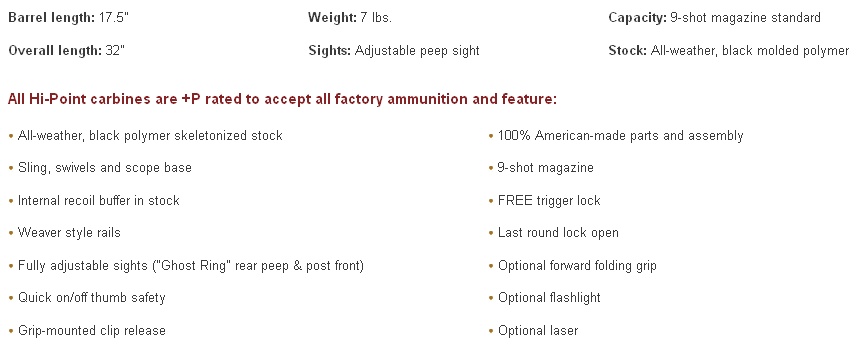
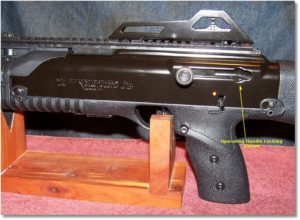

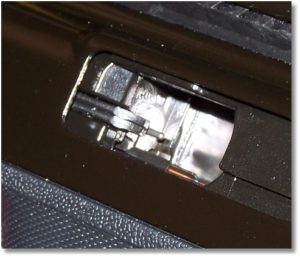
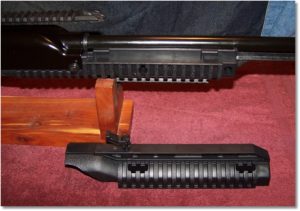
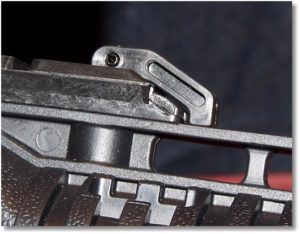

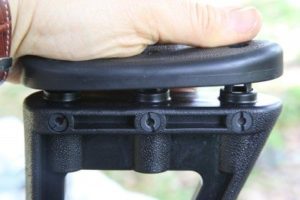
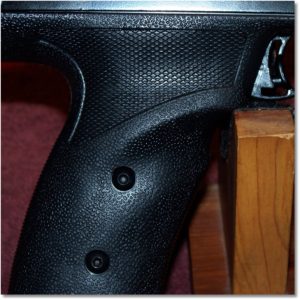
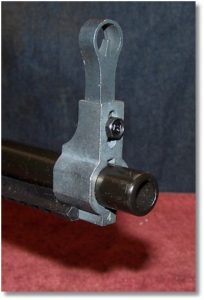
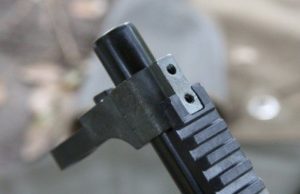
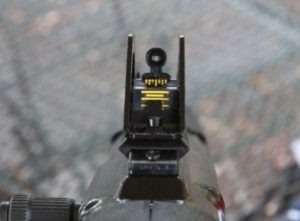


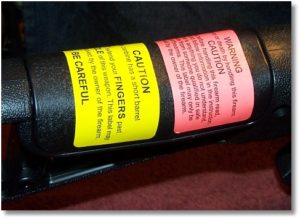
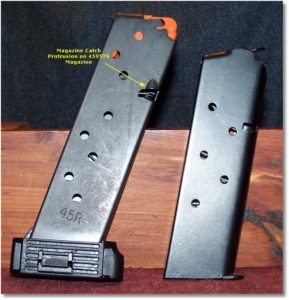

4 Responses to Hi-Point 4595TS Carbine – Product Review